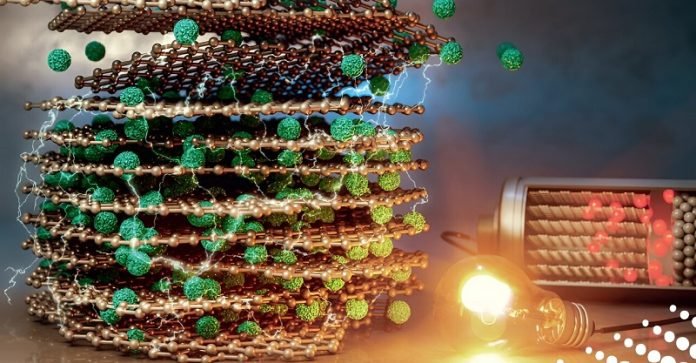
Electric cars are becoming a big deal.
People want them to drive long distances without needing to charge often, just like cars with gasoline.
At Penn State, researchers, led by Assistant Professor Hongtao Sun, have made an exciting discovery that might help achieve this. Their findings were shared in the journal Carbon.
What’s the Big Idea?
Inside every battery, there are parts called electrodes. They’re like gateways that let electricity flow in and out.
To make a battery that can store more energy, you’d want these electrodes to be thicker and denser. This is a bit like wanting a larger water tank to store more water.
But there’s a challenge. Making electrodes thicker can cause them to perform poorly in some ways. Just like a big water tank might take a long time to fill up, thick electrodes can be slow to charge or discharge.
What Did the Researchers Do?
To solve this problem, Sun’s team created thicker electrodes that still allow for fast charging.
They used a special method called Spark Plasma Sintering (SPS) to make these electrodes. Imagine this as a high-tech baking process that uses heat and pressure to form the electrode material.
Thanks to this method, their electrodes became much thicker than usual. Sun said, “The typical thickness of a battery electrode is about 50 to 100 microns (super thin, like a strand of hair!). But with our method, we achieved 300 to 500 microns. This means the battery can store more energy.”
When a battery has thicker electrodes, it can hold more energy in the same amount of space. This can make electric cars drive longer distances before needing a charge.
It also means the battery can be made smaller and lighter. Sun compares this to adding more compact batteries to a car to improve its driving distance.
Plus, there are other parts in a battery that don’t really help with storing energy. They just add weight. By focusing on making the electrodes thicker and better, the researchers are making sure more of the battery is actively helping to store and release energy.
The researchers are now thinking about how to make these improved batteries on a big scale. They’re also exploring cool ideas to reduce the weight of electric vehicles even more.
Sun mentioned an idea of turning parts of the car itself into a battery. Imagine if the roof of your electric car wasn’t just a roof, but also a battery! This would make the car lighter and more efficient.
Researchers at Penn State might have found a way to make electric car batteries even better. They’ve developed a method to make thicker, more efficient battery parts called electrodes.
This could mean cars that drive longer distances and batteries that charge faster. And the future? Maybe parts of our cars will even become batteries themselves!
Follow us on Twitter for more articles about this topic.
Source: Penn State.



